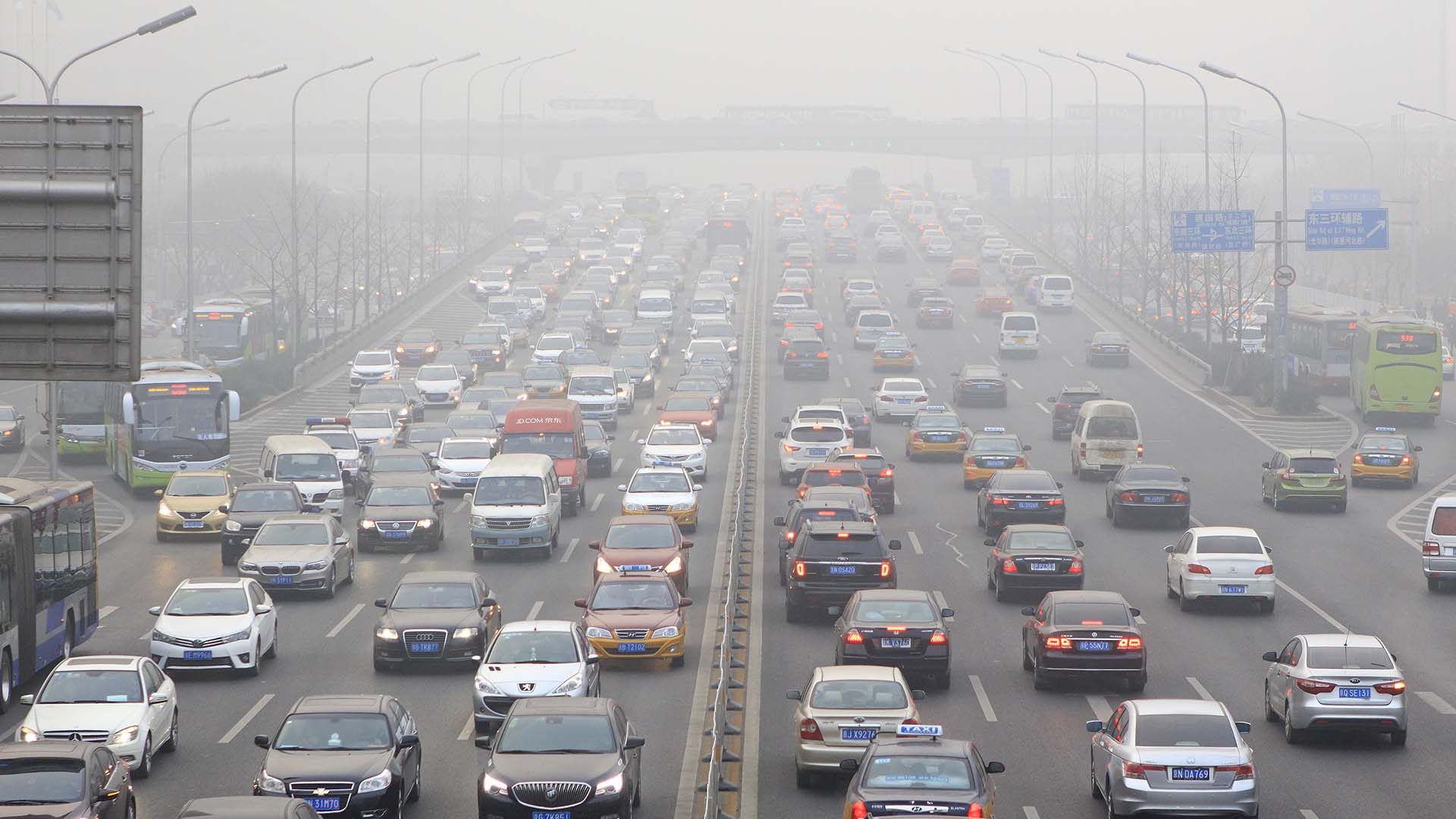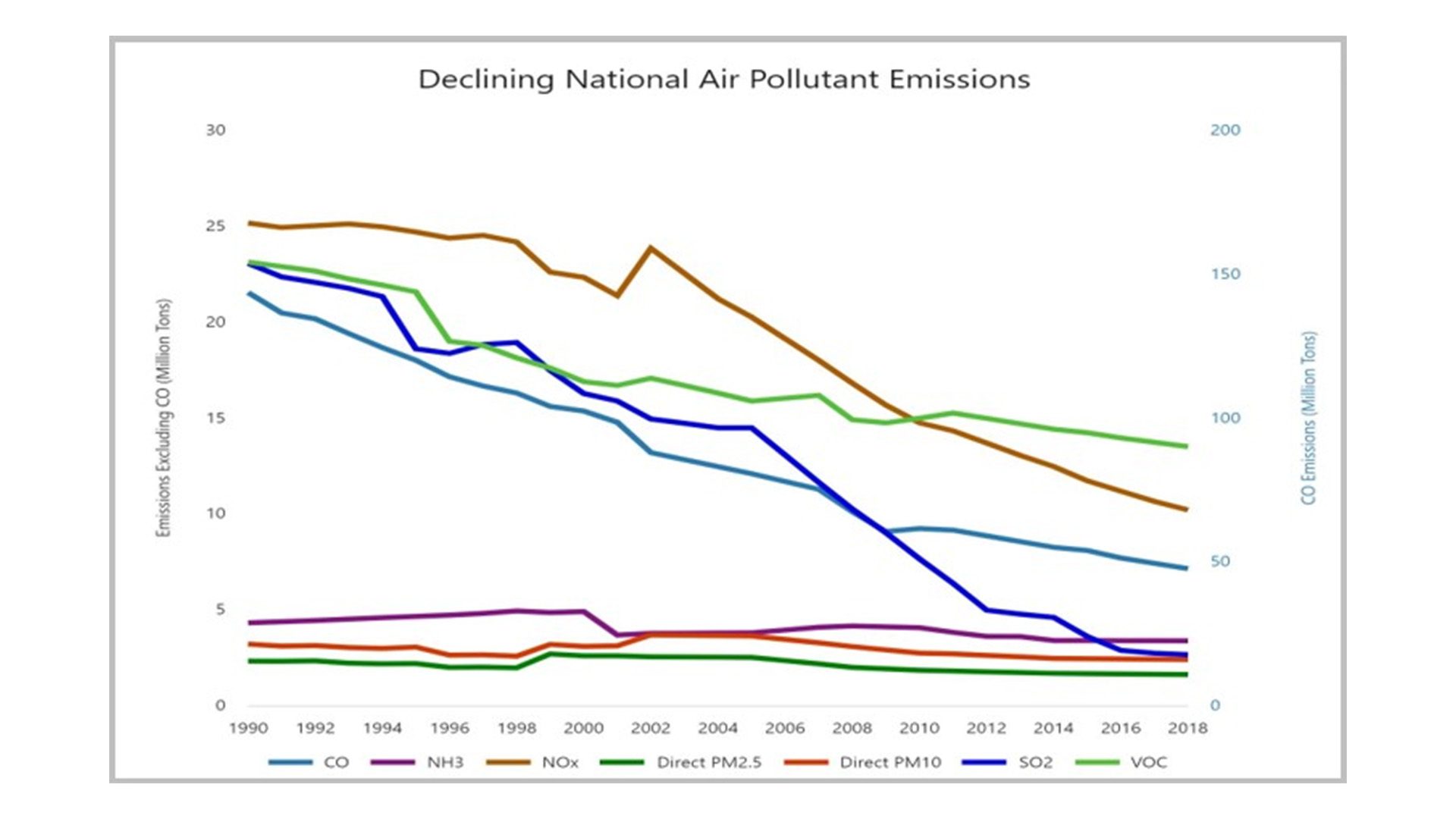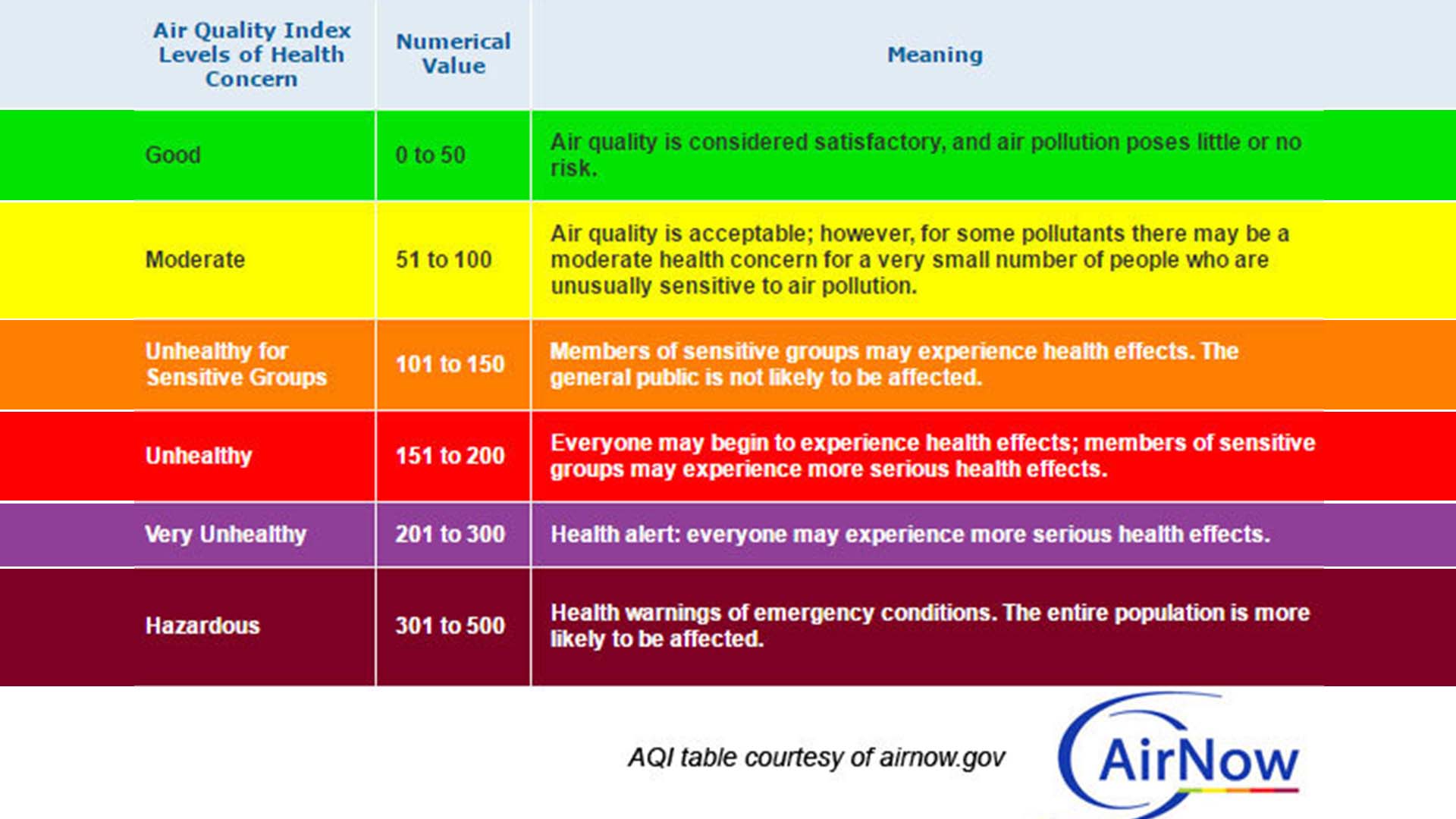According to the World Health Organization (WHO), air pollution causes nearly seven million deaths each year, and nine out of ten human beings currently breathe air that exceeds the WHO’s guideline limits for pollutants. Here is everything you should know about the problem of air pollution and what you can do about it.
What is Air Pollution?
Air pollution is the release of pollutants into the air that are detrimental to human health and the planet. It is a mix of hazardous substances that contaminate the indoor or outdoor environment from both human-made and natural sources.
Human-made air pollutants include vehicle emissions, fuel oils and natural gas to heat homes, by-products of manufacturing and power generations, and fumes from chemical production. Natural air pollutants include smoke from wildfires, ash and gasses from volcanic eruptions, and gasses emitted from decomposing organic matter in soils (such as methane from landfills). According to John Walke, the director of the NRDC’s Clean Air Project, “Most air pollution comes from energy use and production. Burning fossil fuels releases gasses and chemicals into the air.”
Furthermore, air pollution and air quality are closely linked to the earth’s climate and ecosystems. Air pollution not only contributes to climate change; it is also made worse by it. As a result, policies that reduce air pollution also help mitigate climate change.
What Are Air Pollution’s Causes and Effects?
Air pollution’s effects vary on the type of pollutant, its length of exposure and level, and more; the effects can be on the environment, individuals, or both.
For individuals, air pollution exposure is most often associated with oxidative stress and inflammation in human cells, which could turn into cancer, cardiovascular disease, respiratory diseases, diabetes, obesity, reproductive, neurological, and immune system disorders, and more.
For the environment, scientists warn that increased air pollution and the resulting climate change will lead to more intense and often hurricanes, storms, floods, droughts, heat waves, and wildfires. Scientists have also predicted that the pollution will cause ocean acidification, sea level rise, harm to agriculture and forests, species extinctions, and ecosystem damage.

Smog and Soot
The two most common types of air pollution are smog (ground-level ozone) and soot (particulate matter). Smog occurs when emissions from combusting fossil fuels react with sunlight, whereas soot is made up of tiny particles of chemicals, soil, smoke, dust, or allergens that are carried through the air. Both come from cars, trucks, factories, power plants, engines, and more—anything that combusts fossil fuels.
Smog and soot can irritate the eyes, throat, lungs, and bloodstream, thus intensifying and/or causing asthma, allergies, bronchitis, and even heart attacks. A 2020 study even found that COVID-19 mortality rates were higher in areas with more soot pollution, showing a correlation between long-term exposure to particulate matter and the virus’ deadliness. Additionally, because highways, airports, and other polluting facilities are historically situated in or near low-income neighborhoods, the detrimental problems of air pollution from smog and soot disproportionately affect the people who live in these communities.
Hazardous Air Pollutants
Numerous air pollutants post severe or fatal health risks. For example, benzene, emitted from gasoline combustion, is a carcinogen that can cause eye, skin, and lung irritation and blood disorders. Also, both emitted from coal combustion, mercury attacks the central nervous system, and dioxins can affect the liver, immune, nervous, endocrine, and reproductive system.
Another hazardous air pollutant is polycyclic aromatic hydrocarbons (PAHs) which are by-products of traffic exhaust and wildfire smoke. In addition to combustion, various industrial processes and power generations produce PAHs as by-products. These pollutants have been linked to eye and lung irritation, blood and liver issues, and cancer.
Other byproducts of motor vehicle emissions and industrial processes include carbon dioxide, carbon monoxide, nitrogen oxides, and sulfur oxides. These pollutants can be linked to difficulties breathing, asthma, lung disease, death, and more.
Controlling Air Pollution
Regulations
There are regulations worldwide from numerous companies and countries to reduce the amount of air pollution produced each year. For example, all 198 UN Member States began phasing out the production of chemicals that destroy ozone in the Earth’s upper atmosphere under an international treaty known as the Montreal Protocol. Adopted in 1987, this protocol regulates the production and consumption of nearly 100 man-made chemicals referred to as ozone-depleting substances (ODS).
Predating the Montreal Protocol, with help from key organizations and literature such as Rachel Carson’s Silent Spring, the Clean Air Act was passed in the United States in 1970. The Clean Air Act of 1970 authorized the development of federal and state regulations to limit emissions from both stationary (industrial) sources and mobile sources. The act was amended in 1977 and 1990 to increase its authority and to include more programs and regulations around toxic air pollutants.

The EPA continues to revise and add national air quality standards and regulations based on recent studies, recommendations, and air quality levels. This approach has resulted in significant successes throughout the decades.
For example, under the Clean Air Act and the Montreal Protocol, the United States has phased out the production of substances with the greatest potential to deplete the ozone layer such as CFCs, halons, methyl chloroform, and carbon tetrachloride. The United States and other countries are currently completely phasing out the production of hydrochlorofluorocarbons (HCFCs) by 2030. HCHFs are chemical compounds commonly used in the foam, refrigeration, and air conditioning sectors that destroy the protective ozone layer.
How to Reduce Air Pollution
By and large, the most effective way to reduce air pollution is through using cleaner fuels and renewable energy sources, maximizing fuel efficiency on our vehicles, and using more electric vehicles. Many industries, along with individual companies, have been working towards decreasing their carbon footprint and air pollution, such as travel, architecture, transportation, spirits, mining, and much more.
As a bonus, according to the NRDC, the annual benefits of cleaner air are up to 32 times greater than the cost of clean-air regulations. For example, cleaner air means up to 370,000 avoided premature deaths, 189,000 fewer hospital admissions for cardiac and respiratory illnesses, and net economic benefits of up to $3.8 trillion for the U.S. economy every year.
The easiest way that you can personally reduce air pollution is to walk, ride a bike, or take public transportation, when possible. If you are driving, opt for a car with better gas mileage or an electric car. Other things you can do to reduce air pollution include buying your food locally, using renewable energy, and being conscious of what companies you are supporting in terms of what they are doing to reduce their carbon footprint.

As for how to protect your health from the problems of air pollution, one thing you can do is to keep an eye on the weather report or air pollution monitors like AirNow. If the air quality or pollution levels are high, limit the time you spend outside and keep your windows shut. Additionally, if you exercise outside, try to stay as far away from heavily trafficked areas as possible. Lastly, wear sunscreen. When ultraviolet radiation comes through the weakened ozone layer, it can cause skin damage and skin cancer.




